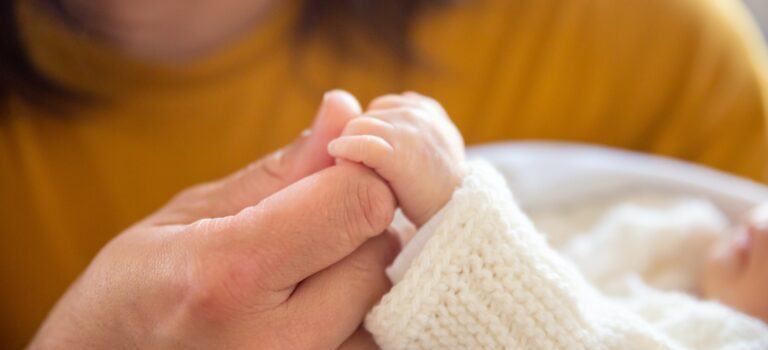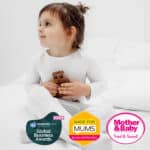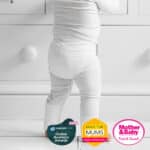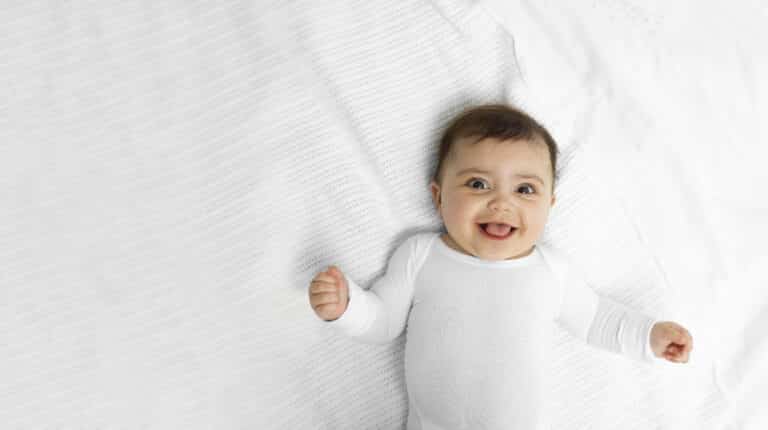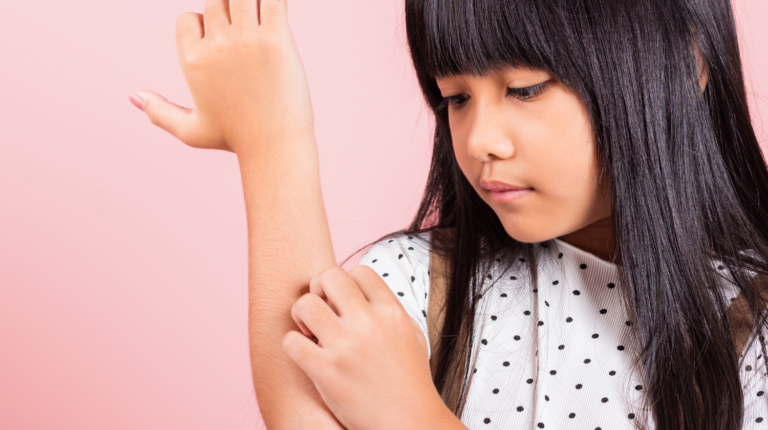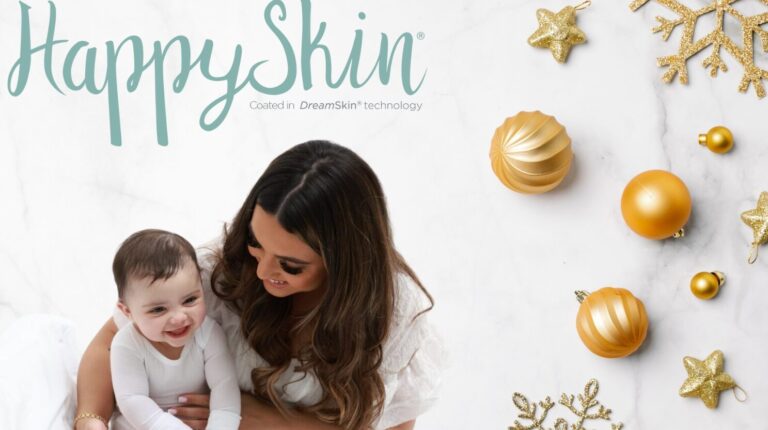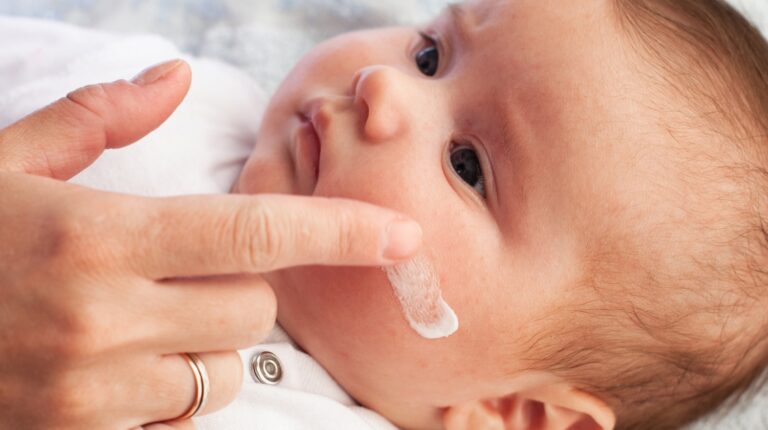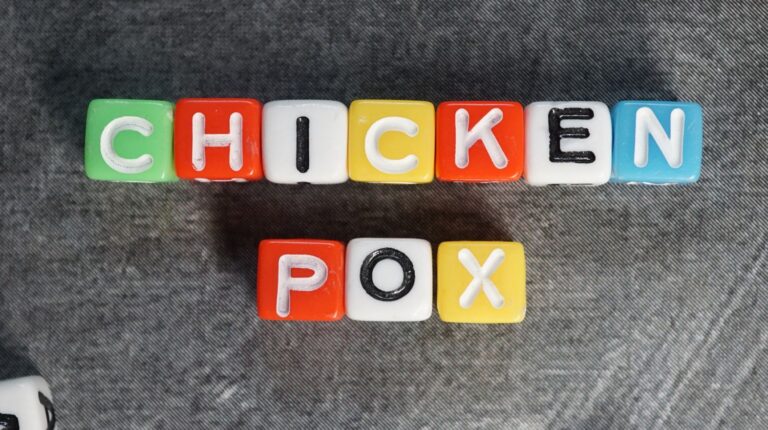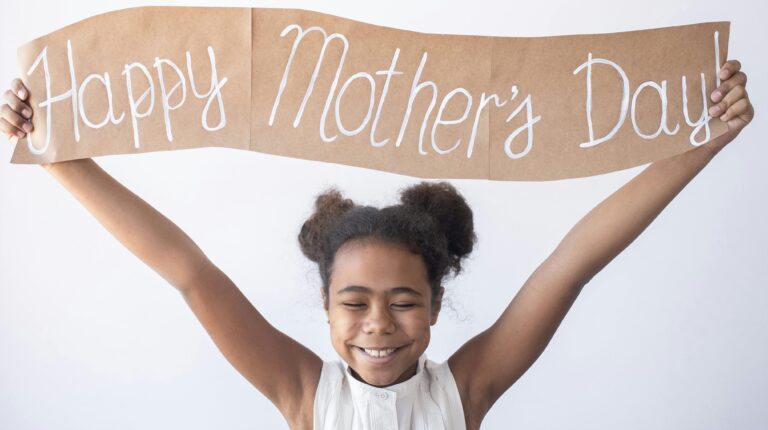
If your child is suffering with red, itchy and inflamed skin, otherwise known as eczema, you’ll obviously be doing everything you can to try and figure out what has caused it, and how you can help them.
In this blog post, we discuss what causes eczema in babies and children, how eczema usually presents in little ones, and how you can treat it.
Causes of eczema in children and babies
There are several types of eczema, some of which are more common in babies and children than others. The kinds of eczema that usually affect little ones are atopic dermatitis, dyshidrotic eczema, contact dermatitis, and seborrheic dermatitis, the last of which you probably know as ‘cradle cap’.
None of these types of eczema are contagious. So, if your child didn’t catch it from someone else, you’re probably wondering how and why they’ve got it.
What is the cause of eczema in children and babies?
There is often no obvious cause of eczema in children, which often appears in the first five years of a child’s life. However, there are some identifiable triggers, and managing flare-ups of the condition can be easier if you can pinpoint what these are for your child.
Whilst the exact cause of eczema in children is unknown, research has shown that it is largely down to a combination of your child’s genes and triggers in their environment.
These environmental factors can range from the foods they eat to washing powders, cigarette smoke, soaps, stuffed animals, or simply the weather. You may find that your child’s eczema tends to get worse in the winter due to the air being drier. Additionally, your baby’s saliva can cause irritation on their cheeks, chin and neck due to drooling.
These triggers in the environment cause the immune system to ‘switch on’ unnecessarily. This in turn causes your child’s skin cells not to behave as they should, which is what makes their skin so red and angry looking.
Your child is more likely to develop eczema, particularly atopic dermatitis, if your family has a history of the condition, but also if there is a history of asthma or hay fever.
What does eczema in children look like?
Eczema in young children and babies usually presents as a painful and itchy rash. It can appear anywhere on the face or body, but usually not the groin area. A rash on the groin area is more likely to be nappy rash.
The location and appearance of eczema tends to be different in younger children and babies than in older children and adults. Here are the symptoms of eczema to look out for during each stage of your little one’s development.
First six months of baby’s life
Eczema which presents during the first six months of your baby’s life tends to appear on the face, specifically the cheeks, chin and forehead. It often spreads to other areas of the body, and at this young age, skin usually appears red and weepy. Seborrheic dermatitis (cradle cap) can also appear on the scalp.
Babies aged between six and twelve months
Between six and twelve months of age, eczema is more likely to appear on your baby’s knees and elbows. This is because these places tend to rub along the floor as your baby is crawling. The rash can become infected due to repeated friction and may form a yellowish crust.
Children aged two to five years old
In toddlers, the face is frequently affected by atopic dermatitis. This usually presents in this age group as red patches with small bumps, and most often appears around the mouth and eyelids.
Creases in the skin around the elbows, knees, wrists and ankles are also often affected in very young children. The skin may start to look quite dry and scaly, with cracks, which can get infected. This thicker skin is known as ‘lichenification’.
Children aged five years and older
In older children, eczema can appear in the creases of elbows and knees. Sometimes, only their hands will be affected. Atopic dermatitis in older children is often characterised by red and itchy patches behind ears, and on the feet and scalp.
It is a common misconception that cradle cap only affects babies. Older children and adults can suffer from this condition too.
How to treat eczema in children and babies
Whilst there is no known cure for eczema, you can manage flares of your child’s condition by following a few basics:
- Keep a diary of your child’s eczema flare ups to help identify environmental triggers.
- Bath your child daily and moisturise their skin whilst still damp to lock in the moisture.
- If your doctor has prescribed any medication, ensure that you use it consistently, even when your child is not having an eczema flare.
Find out more about eczema treatments for babies and children.
Clothing to treat eczema in children and babies
One of the most effective treatments for eczema in children and babies is HappySkin® clothing.
HappySkin® is a base layer clothing range that is coated with a wash durable technology known as DreamSkin® technology. This technology contains a unique polymer, which has been clinically proven to soothe and protect your little one’s dry, sensitive and eczema-prone skin.
The technology works by mimicking the top layer of your child’s healthy skin. It does this by regulating moisture levels on the skin’s surface and controlling temperature, so your child will never be too cold or too hot – exacerbating factors in eczema.
Simply put, HappySkin® clothing takes over the job that healthy skin would normally do.
Our range of HappySkin® clothing includes round neck tops, leggings, pyjamas, socks, bodysuits and sleepsuits. Everything you need to keep your child’s eczema at bay.
If you have any questions about HappySkin® products, or you’d like to know more about how the technology works, please do not hesitate to contact our team by emailing hello@happy-skin.com.
